Hair Follicle-Targeting Drug Delivery Strategies for the Management of Hair Follicle-Associated Disorders
May 2022
in “Asian Journal of Pharmaceutical Sciences”
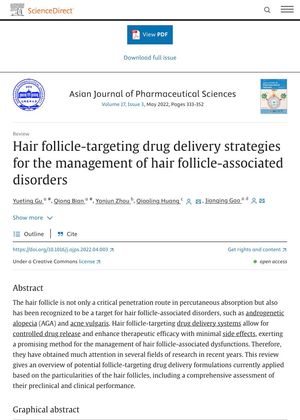
TLDR New hair follicle-targeting treatments show promise for hair disorders but need more research on safety and effectiveness.
The document reviews hair follicle-targeting drug delivery systems for managing hair follicle-associated disorders like androgenetic alopecia and acne vulgaris. These systems, including polymeric nanoparticles, lipid nanoparticles, and microneedles, allow for controlled drug release, enhancing therapeutic efficacy with minimal side effects. The hair follicle provides a way to bypass the skin's barrier, offering a large surface area for drug absorption. The review highlights the importance of the physicochemical properties of the drug and the type of carrier in the formulations for preferential deposition in hair follicles. The document also discusses the influence of particle size and surface charge on hair follicle targeting. The review concludes that hair follicle-targeting drug delivery systems are a promising method for managing hair follicle-associated disorders. However, challenges remain, including the complexity of hair follicle cycles, potential toxicity of nanoparticles, and the difficulty of replicating clinical outcomes from lab experiments. Future research should focus on selecting appropriate nanocarrier types, developing reliable skin models that mimic disease states, and understanding the potential dangers and long-term fate of nanomaterials in hair follicles.
View this study on sciencedirect.com →
Cited in this study

research Minoxidil: a comprehensive review
Minoxidil effectively treats hair loss, especially androgenetic alopecia, but needs more research for better understanding.

research Ceria Nanozyme-Integrated Microneedles Reshape the Perifollicular Microenvironment for Androgenetic Alopecia Treatment
Microneedles help treat hair loss by improving hair surroundings and promoting growth.

research Dissecting the microenvironment around biosynthetic scaffolds in murine skin wound healing
Different scaffold patterns improve wound healing and immune response in mouse skin, with aligned patterns being particularly effective.

research Minoxidil-Coated Lysozyme-Shelled Microbubbes Combined With Ultrasound for the Enhancement of Hair Follicle Growth: Efficacy In Vitro and In Vivo
Using minoxidil-coated microbubbles with ultrasound significantly boosts hair growth.
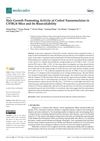
research Hair Growth Promoting Activity of Cedrol Nanoemulsion in C57BL/6 Mice and Its Bioavailability
Cedrol Nanoemulsion was found to be more effective at promoting hair growth than traditional treatments and had better bioavailability.
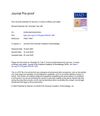
research Oral minoxidil treatment for hair loss: A review of efficacy and safety
Oral minoxidil promotes hair growth but may cause side effects; needs monitoring.

research An updated review of the sebaceous gland and its role in health and diseases Part 2: Pathophysiological clinical disorders of sebaceous glands
Sebaceous glands are involved in various skin disorders, some treatable with medications like finasteride and minoxidil.
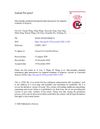
research Microneedles mediated bioinspired lipid nanocarriers for targeted treatment of alopecia
A new hair loss treatment uses tiny needles to deliver a drug-loaded lipid carrier, promoting hair growth more effectively than current treatments.

research Investigation of transfollicular caffeine penetration using microdialysis on ex vivo porcine ear skin
Caffeine penetrates skin quickly through open hair follicles, but less through closed ones, with levels becoming equal after 22 hours.

research Micro needling: A novel therapeutic approach for androgenetic alopecia, A Review of Literature
Microneedling may help hair loss, but needs more research.
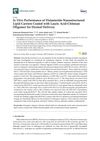
research In Vitro Performance of Dutasteride-Nanostructured Lipid Carriers Coated with Lauric Acid-Chitosan Oligomer for Dermal Delivery
Dutasteride-loaded nanoparticles coated with Lauric Acid-Chitosan show promise for treating hair loss due to their controlled release, low toxicity, and potential to stimulate hair growth.
research Developing formulations for drug follicular targeting: Nanoemulsions loaded with minoxidil and clove oil

research Current advances in stem cell-based therapies for hair regeneration
Stem cell therapies show promise for hair regrowth but face production and application challenges.

research <p>Potential of Nanoparticles as Permeation Enhancers and Targeted Delivery Options for Skin: Advantages and Disadvantages</p>
Nanoparticles can improve skin drug delivery but have challenges like toxicity and stability that need more research.
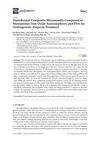
research Transdermal Composite Microneedle Composed of Mesoporous Iron Oxide Nanoraspberry and PVA for Androgenetic Alopecia Treatment
Microneedle made of iron oxide and PVA helps hair regrowth in alopecia treatment.

research Dutasteride nanocapsules for hair follicle targeting: Effect of chitosan-coating and physical stimulus
Chitosan-coated dutasteride nanocapsules improve hair treatment, and physical stimulation boosts effectiveness.

research Functional complexity of hair follicle stem cell niche and therapeutic targeting of niche dysfunction for hair regeneration
Understanding how hair follicle stem cells work can help find new ways to prevent hair loss and promote hair growth.

research Exploring the potential of minoxidil tretinoin liposomal based hydrogel for topical delivery in the treatment of androgenic alopecia
Minoxidil tretinoin liposomal based hydrogel shows promise for effective treatment of hair loss by delivering both drugs at the same time.
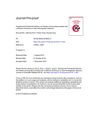
research Transdermal finasteride delivery via powder-carrying microneedles with a diffusion enhancer to treat androgenetic alopecia
Microneedles with enhancer effectively promote hair growth and increase hair density.

research Transdermal delivery of Minoxidil using HA-PLGA nanoparticles for the treatment in alopecia
Minoxidil in HA-PLGA nanoparticles effectively treats alopecia through skin delivery.
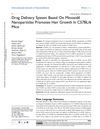
research <p>Drug Delivery System Based On Minoxidil Nanoparticles Promotes Hair Growth In C57BL/6 Mice</p>
Minoxidil nanoparticles can potentially be a more effective treatment for hair growth than current treatments.

research Phospholipid–polymer hybrid nanoparticle-mediated transfollicular delivery of quercetin: prospective implement for the treatment of androgenic alopecia
Quercetin-loaded nanoparticles can penetrate skin, minimize hair loss, and promote hair regrowth, showing slightly better results than a marketed product.

research Advances in Regenerative Stem Cell Therapy in Androgenic Alopecia and Hair Loss: Wnt Pathway, Growth-Factor, and Mesenchymal Stem Cell Signaling Impact Analysis on Cell Growth and Hair Follicle Development
Stem cell therapy, particularly using certain types of cells, shows promise for treating hair loss by stimulating hair growth and development, but more extensive trials are needed to confirm these findings.
research Cyproterone acetate-loaded nanostructured lipid carriers: effect of particle size on skin penetration and follicular targeting
Smaller particles of the drug carrier penetrated skin better, with 300 nm size being best for targeting hair follicles.

research A Simple Non-Invasive Approach toward Efficient Transdermal Drug Delivery Based on Biodegradable Particulate System
A new method for delivering drugs through the skin using biodegradable particles was found to be effective.
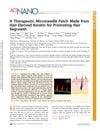
research A Therapeutic Microneedle Patch Made from Hair-Derived Keratin for Promoting Hair Regrowth

research Dissection of genetic variation and evidence for pleiotropy in male pattern baldness
Male pattern baldness is mostly inherited, involves many genes, and is linked to other traits like early puberty and strong bones.
research Melatonin vitamin C-based nanovesicles for treatment of androgenic alopecia: Design, characterization and clinical appraisal
research Clinical cosmeceutical repurposing of melatonin in androgenic alopecia using nanostructured lipid carriers prepared with antioxidant oils

research Finasteride nano-transferosomal gel formula for management of androgenetic alopecia: ex vivo investigational approach
NTF gel improves finasteride delivery for hair loss treatment, reducing side effects.
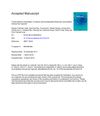
research Transcutaneous implantation of valproic acid-encapsulated dissolving microneedles induces hair regrowth
Tiny needles with valproic acid can effectively regrow hair.

research Nanoemulsion Vehicles as Carriers for Follicular Delivery of Luteolin
Nanoemulsion is a promising method for delivering luteolin to promote hair growth without minoxidil's side effects.
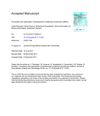
research Formulation and optimization of transfersome containing minoxidil and caffeine
Minoxidil and caffeine in transfersomes improve hair growth treatment.

research Minoxidil Skin Delivery from Nanoemulsion Formulations Containing Eucalyptol or Oleic Acid: Enhanced Diffusivity and Follicular Targeting
Eucalyptol and oleic acid in nanoemulsions improve minoxidil delivery to hair follicles, potentially enhancing hair loss treatment.
research Selective delivery of adapalene to the human hair follicle under finite dose conditions using polymeric micelle nanocarriers
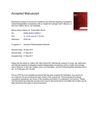
research Mechanistic Analysis of Human Skin Distribution and Follicular Targeting of Adapalene-Loaded Biodegradable Nanospheres With an Insight Into Hydrogel Matrix Influence, In Vitro Skin Irritation, and In Vivo Tolerability
Researchers developed a nanomedicine for acne treatment that delivers medication with less irritation and is non-irritating for oily skin.

research Lactate dehydrogenase activity drives hair follicle stem cell activation
Lactate production is important for activating hair growth stem cells.
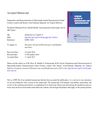
research Preparation and characterization of dutasteride-loaded nanostructured lipid carriers coated with stearic acid-chitosan oligomer for topical delivery
The new dutasteride formula can be applied to the skin, may promote hair growth, and has fewer side effects.

research Design of Finasteride-Loaded Nanoparticles for Potential Treatment of Alopecia
Finasteride-loaded nanoparticles may help treat alopecia.
research Synthesis and Validation of Functional Nanogels as pH-Sensors in the Hair Follicle
Scientists created tiny pH-sensing gels that can safely measure the pH levels inside hair follicles.

research Preparation and Characterization of Minoxidil Loaded Nanostructured Lipid Carriers
Nanostructured lipid carriers improve minoxidil delivery for hair loss treatment.
research Development and characterization of polymeric nanoparticle-based formulation of adapalene for topical acne therapy

research Histological evaluation of follicular delivery of arginine via nanostructured lipid carriers: a novel potential approach for the treatment of alopecia
Using tiny fat particles to deliver arginine to hair follicles could be a new way to treat hair loss.

research Effectiveness of a Layer-by-Layer Microbubbles-Based Delivery System for Applying Minoxidil to Enhance Hair Growth
Minoxidil-coated microbubbles with sonication effectively enhance hair growth.

research Histological assessment of follicular delivery of flutamide by solid lipid nanoparticles: potential tool for the treatment of androgenic alopecia
Flutamide, delivered by solid lipid nanoparticles, could potentially treat hair loss.
research Depositing α-mangostin nanoparticles to sebaceous gland area for acne treatment
α-mangostin nanoparticles improved acne with minimal irritation.
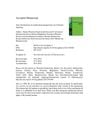
research Roxithromycin-loaded lipid nanoparticles for follicular targeting
Tiny particles carrying roxithromycin can effectively target and deliver the drug to hair follicles without irritation.

research Anti-PDGF receptor β antibody-conjugated squarticles loaded with minoxidil for alopecia treatment by targeting hair follicles and dermal papilla cells
Scientists created tiny particles loaded with a hair growth drug, minoxidil, that specifically target hair follicles and skin cells to potentially improve hair growth.

research Chitosan nanoparticles for targeting and sustaining minoxidil sulphate delivery to hair follicles
Chitosan nanoparticles improve minoxidil delivery to hair follicles for better alopecia treatment.
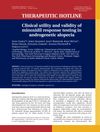
research Clinical utility and validity of minoxidil response testing in androgenetic alopecia
Minoxidil response testing helps treat hair loss effectively and safely.

research Follicular delivery of spironolactone via nanostructured lipid carriers for management of alopecia
Using nanostructured lipid carriers to deliver spironolactone could improve treatment for hair loss.

research Polymeric nanoparticles-embedded organogel for roxithromycin delivery to hair follicles
Scientists created a gel with nanoparticles to deliver medicine to hair follicles effectively.

research Delivery and targeting of nanoparticles into hair follicles
Nanoparticles can improve skin treatments by better targeting hair follicles, but more research is needed for advancement.
research Drug delivery to hair follicles

research Squalene-Containing Nanostructured Lipid Carriers Promote Percutaneous Absorption and Hair Follicle Targeting of Diphencyprone for Treating Alopecia Areata
Squalene-based carriers improve delivery of a treatment to hair follicles for alopecia areata.

research Selective follicular targeting by modification of the particle sizes
Medium-sized particles penetrate hair follicles better than smaller or larger ones, which could improve delivery of skin treatments.
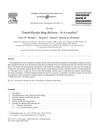
research Transfollicular drug delivery—Is it a reality?
Hair follicles may soon be used more for targeted and systemic drug delivery.